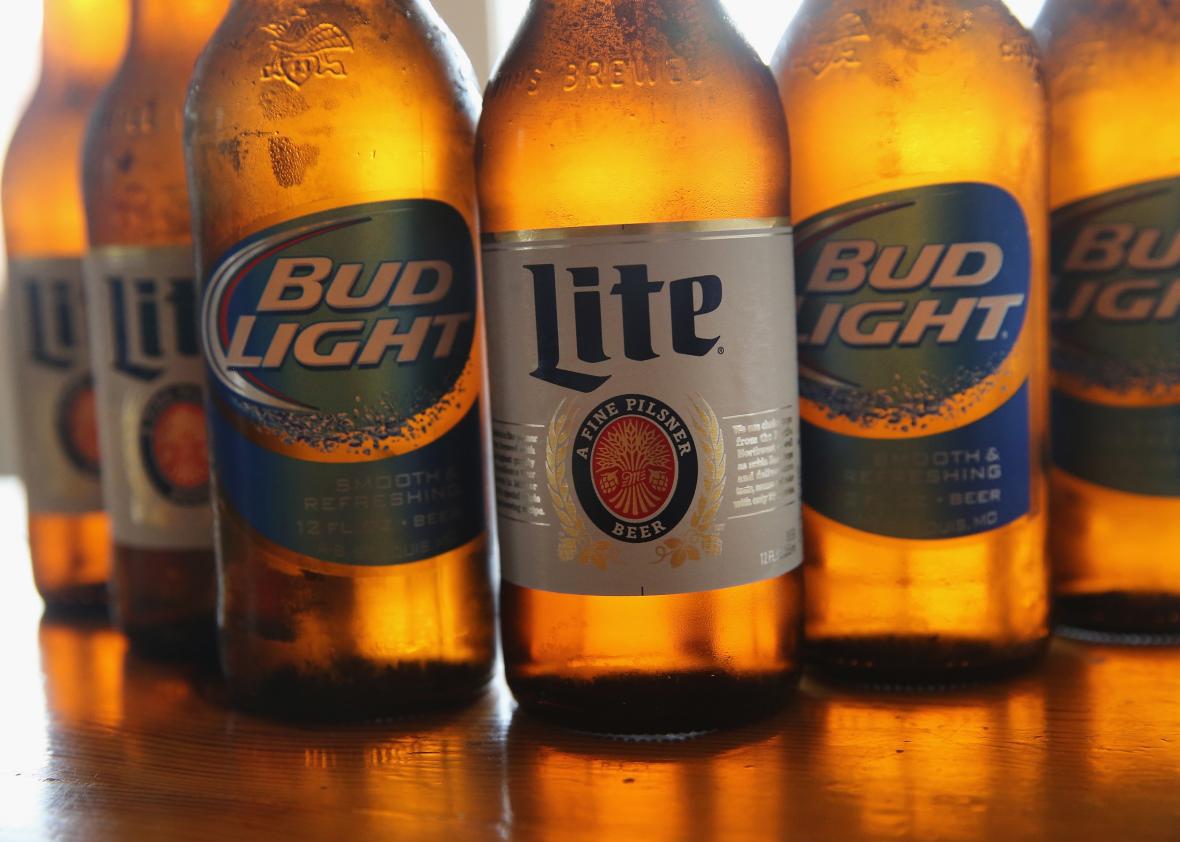This post originally appeared on Business Insider.
On Wednesday, SABMiller confirmed that its rival beer giant Anheuser-Busch InBev was planning to buy it.
If the two companies indeed join forces, they will dominate the global profit pool.
According to a chart shared by Bank of America Merrill Lynch analysts, in 2014 the two companies alone controlled about 58 percent of the industry’s $33 billion in global profits.
By comparison, the next biggest company in terms of profits is Heineken, with only 11.6 percent of the global profit pool, followed by Carlsberg with a mere 4.6 percent.
AB InBev is the world’s biggest brewery by revenue, and its beers include the popular Budweiser, Corona, Stella Artois, and Becks brands. Cidre, which was launched in 2011, is also a growing franchise.
AB InBev, however, doesn’t have much horsepower when comes to local brands, according to BAML analysts. Furthermore, its light lager category is struggling, especially in the US market.
In terms of geography, AB InBev has high market shares in Brazil, Mexico, and North America, as well as a strong presence in China. On the flip side, it has limited exposure to the Middle East and Africa, according to BAML.
SABMiller is the second-largest brewer by revenue. Its major beers include Fosters, Peroni, Miller, and Grolsch. It also does well with local brands including Snow in China, Castle/Impala in Africa, VB in Australia, Aguila in Colombia, and Tyskie in Poland.
Overall, SABMiller has a “good balance of territories with no dominant territory or country,” though its two biggest arenas are the US and South Africa, according to BAML.
It has “no major exposure,” however, to Brazil, Argentina, and Mexico.
Given the possibility that a Budweiser-Miller brewing company could come into fruition, it’s worth pointing out that AB InBev fills in some of SAB Miller’s geographic weaknesses, and vice versa.
Taking a step back, the brewing industry is facing some major headwinds.
For starters, consumers, especially those in the US and the EU, are increasingly interested in craft beers, or experimental beers produced at a much smaller scale than the major brands. Additionally, some brewers are losing market share to spirits and even to wine in some developed markets.
On the positive end, however, continued growth in per-capita consumption in emerging markets is good news, and there’s a big opportunity in Africa, according to BAML.
“Global volume growth for beer has broadly halved to 1.4 percent on average in the past two years from the 10-year average of 2.8 percent,” according to BAML analysts. “We are seeing an ongoing low-growth environment given the influence of these structural challenges.”
See also: Apple just killed a secret policy that used to replace one broken iPhone for free
